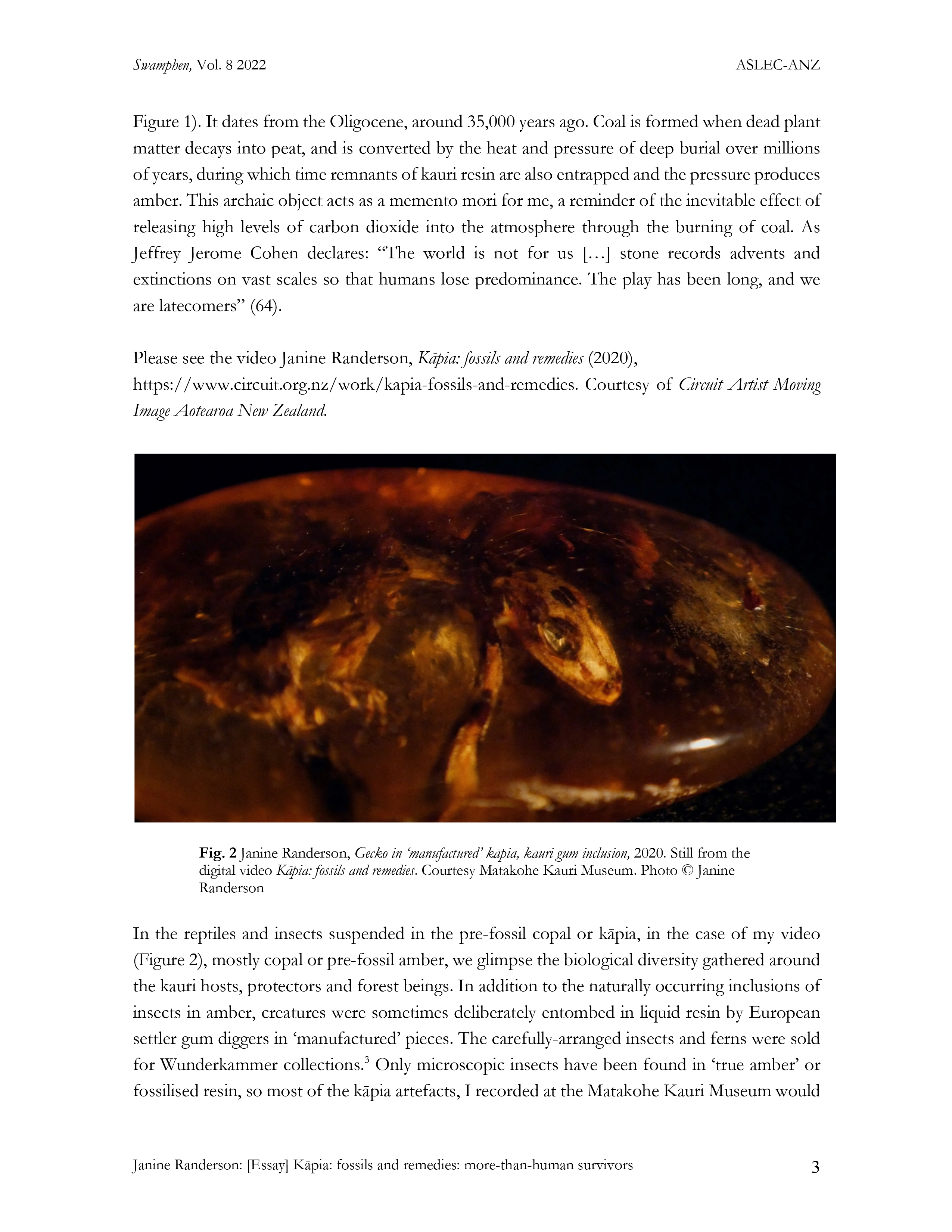Kāpia
Fossils and remedies: more-than-human survivors
DOI:
https://doi.org/10.60162/swamphen.8.16688Keywords:
kāpia, more-than-human geologies, Kauri forests, fossils, Kauri die-back, video art, experimental film, geoaesthetics, Aotearoa, AnthropoceneAbstract
Not long after I was absorbed in the latent energies in the Tsunami boulders and Len Lye’s kinetic systems, I returned to more-than-human geologies in my art practice. The catalyst for my recent video work Kāpia: fossils and remedies was a story of kāpia, a relic of an ancient forest commonly called Kauri gum by the settler-colonists, uncovered in a sand dune in the Hokianga harbour in the ‘far north’ of Aotearoa New Zealand. In long-ago climates, the ancestors of Kauri trees, Agathis australis, grew throughout the country and their traces can be found in the leaf fossil records and in amber, their resin, and the solidified pre-fossil resin, kāpia. Today, only a few stands of original Kauri forest remain in Te Tai Tokerau, Northland, and their future survival is uncertain. The gigantism of the Kauri tree evidences their deep prehistory when they dwelled with huge creatures on the continent of Gondwana in proto-Australia, the Pacific islands, India and Antarctica. Kauri are believed, controversially, to have survived the complete submergence of Aotearoa in the Miocene era, but now they must withstand a new pathogen. Phytophthora agathidicida, commonly called Kauri die-back, surfaced in the Anthropocene, just like COVID-19. We humans are asked by many iwi, tribes, to socially distance from these living ancestor-trees for their own survival, under conditions of rahui, or temporary prohibition. How might we protect bodies of trees, people and other more-than-human companions?

Downloads
Published
Issue
Section
License
Authors who publish with this journal agree to the following terms:- Authors retain copyright and grant the journal right of first publication with the work simultaneously licensed under a Creative Commons Attribution License that allows others to share the work with an acknowledgement of the work's authorship and initial publication in this journal.
- Authors are able to enter into separate, additional contractual arrangements for the non-exclusive distribution of the journal's published version of the work (e.g., post it to an institutional repository or publish it in a book), with an acknowledgement of its initial publication in this journal.
- Authors are permitted and encouraged to post their work online (e.g., in institutional repositories or on their website) prior to and during the submission process, as it can lead to productive exchanges, as well as earlier and greater citation of published work (See The Effect of Open Access).
